Vietnam is a country with a diverse ecosystem, especially reptiles. There are currently about 200 recorded species of snakes in our country, of which about 30 species are identified as venomous.
Snakes in general and venomous snakes in particular are distributed throughout Vietnam, in many different terrains, including plains, midlands, tropical forests, high mountains and even in marine environments...
Among the venomous snakes in Vietnam, many species are found even in densely populated areas. Recognizing venomous snakes will help reduce the risk of snakebites, leading to unfortunate accidents.
Below are some venomous snakes with easily identifiable characteristics in Vietnam. Based on these characteristics, readers can recognize snakes crawling into their homes or living areas to take appropriate measures.
Cobra species
When mentioning venomous snakes in Vietnam, many people will immediately think of cobras, a venomous snake that can be found throughout the country.
Initially, scientists estimated that there were 20 to 22 species of cobras, but recent studies have shown that the cobra genus has up to 38 species, including new species that have split off from existing ones.
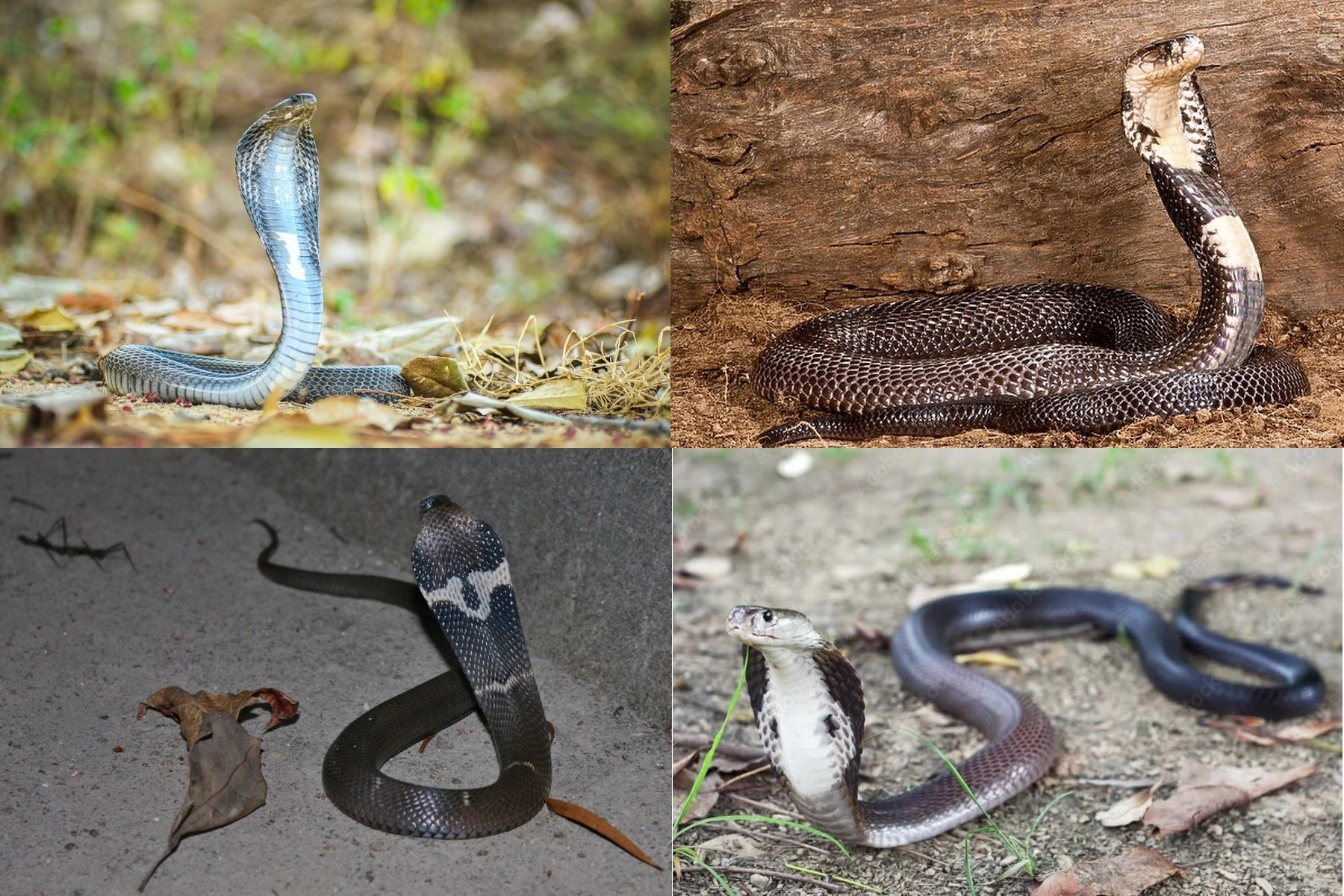
All cobra species have the ability to raise their heads and expand their gills to threaten enemies (Photo: iNatural).
In Vietnam, there are 4 species of cobras distributed and all possess deadly venom, including the Chinese cobra, Fu Xi cobra, sand tiger and Indochinese spitting cobra (also known as cat tiger).
Of which, the Chinese cobra is widely distributed throughout the Northern region extending to the North Central region; the Fu Xi cobra is mainly distributed in the Northwest region; the sand tiger is mainly found in the Central region to the Southern provinces and cities and the Indochinese spitting cobra is only found in the Southern region of our country.
Cobras are easily recognizable venomous snakes, with common characteristics such as long bodies, large heads, and the ability to inflate their necks to intimidate predators. Some species of cobras, in addition to biting and injecting venom, can also spray venom to attack predators from a distance.
Cobras have a diverse habitat, in which they can live in open spaces, densely populated areas. There have been many cases of cobras being found in crowded places or crawling into people's houses.
A large cobra crawled into a kitchen in Lam Dong ( Video : Manh Tuong).
People do not need to know how to clearly distinguish between the cobra species distributed in Vietnam, but only need to recognize that the snake has the ability to raise its head, expand its gills and make a "hissing" sound to threaten, then immediately stay away, ask someone with experience to chase away or destroy the animal if it crawls into the house.
Homeowner startled to discover cobra slithering into pile of dishes (Video: Hong Loan).
King Cobra
In Vietnam, many people often mistake the king cobra for a cobra, originating from the name king cobra (in English "King Cobra"), as well as the ability of this snake to raise its head and spread its hood to threaten.
Both cobras and king cobras belong to the genus Ophiophagus, but the king cobra is not a species of the genus Naja but a species of the genus Ophiophagus.
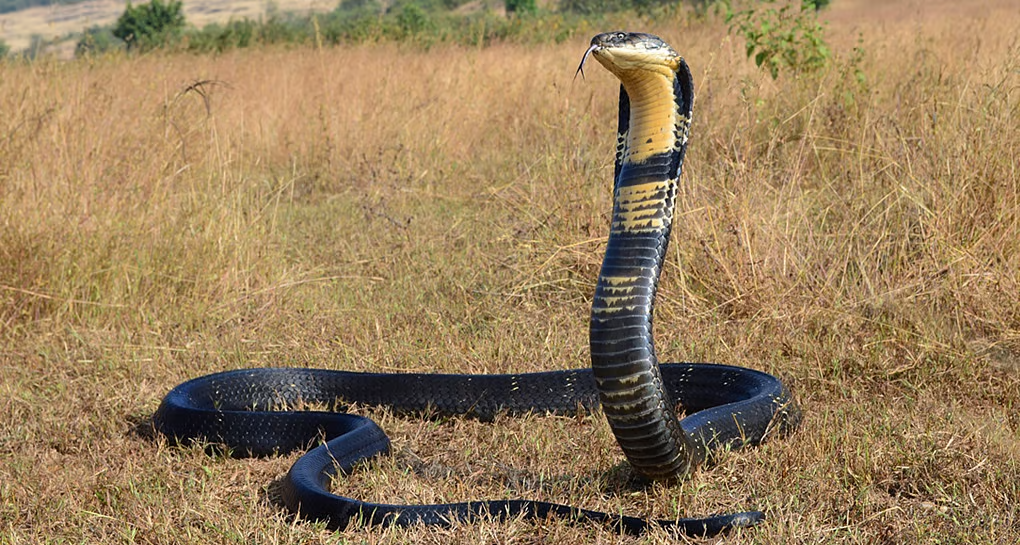
King cobras also have the ability to spread their hoods and raise their heads, but their size is much larger than that of cobras (Photo: iStock).
King cobras also have many differences in morphology and biological characteristics compared to cobras, such as larger size and longer length (king cobras are the largest venomous snakes in the world , can be up to more than 5m long).
King cobras are carnivores of snakes, including both venomous and non-venomous species. In conditions of food shortage, king cobras eat their own kind.
King cobras serve to control the snake population in their range and to control the king cobra population itself in the event of a decline in the snake population in the area.
Like cobras, king cobras can be identified by their ability to raise their heads and spread their hoods. They are also notable for their large size and black body with horizontal stripes.
Unlike other cobras, king cobras usually live in humid tropical forests and high mountainous areas, so this snake species is almost never found in residential areas in the plains. However, they can still be found in villages and residential areas in the highlands of Vietnam.
Red neck grass
The red-necked water snake, also known as the school snake, fire snake, red-necked water snake or queen of the night... is one of the few species of water snakes that possess deadly venom.
In Vietnam, this snake species is widely distributed in almost all provinces and cities. This is a semi-aquatic snake species, often living in areas near water such as rice fields, ponds, lakes, rivers, streams with slow currents, dams, etc. This snake species also appears in residential areas, so it often clashes with humans.

The red-necked snake is a common venomous snake species commonly found in Vietnam, notable for its distinctive red neck (Photo: SIFASV).
The red-necked grass snake is a medium-sized species, with a body length of only 0.8 to 1 m, with females being much larger than males.
The most prominent feature of the red-necked grass snake is a prominent red scale on its neck, making it easy to identify. This feature is also the reason for the name red-necked grass snake or student snake because it reminds many people of the red scarf of a student.
The Red-Necked Snake is a docile snake that always tries to hide when faced with humans. When threatened or agitated, the Red-Necked Snake can raise its head, flatten its neck, and curl its body into an "S" shape, ready to strike at its enemy.
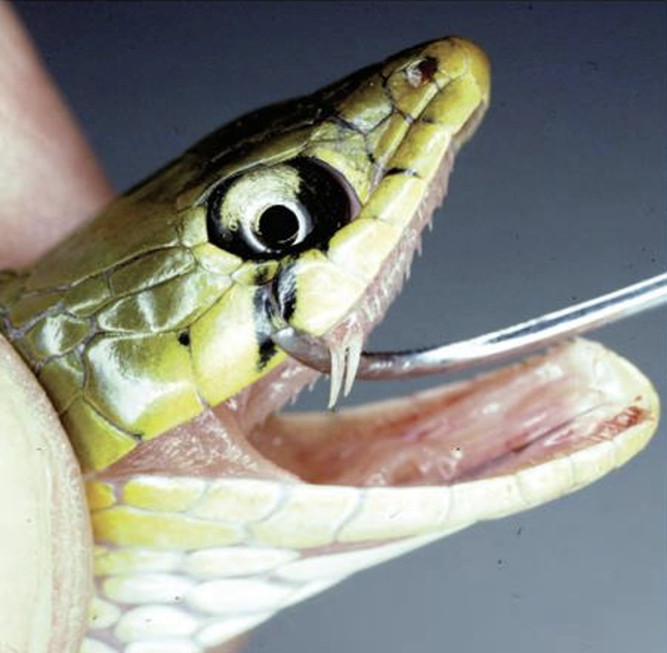
The venomous fangs of the red-necked grass snake are located deep inside the jaw and are rarely used, leading many people to mistakenly believe that this is a harmless snake (Photo: Mahidol).
The red-throated snake is a posterior-fanged species, meaning that its venom-injecting fangs are located deep inside the upper jaw, near the throat, instead of just outside the jaw like most other venomous snakes.
Due to the deep position of the fangs, red-necked snakes in particular and other hind-fanged snakes in general often have to bite deeply into their prey or enemies to put their fangs in the right position to be able to inject venom. This makes the venom injection of hind-fanged snakes less effective than that of front-fanged snakes.
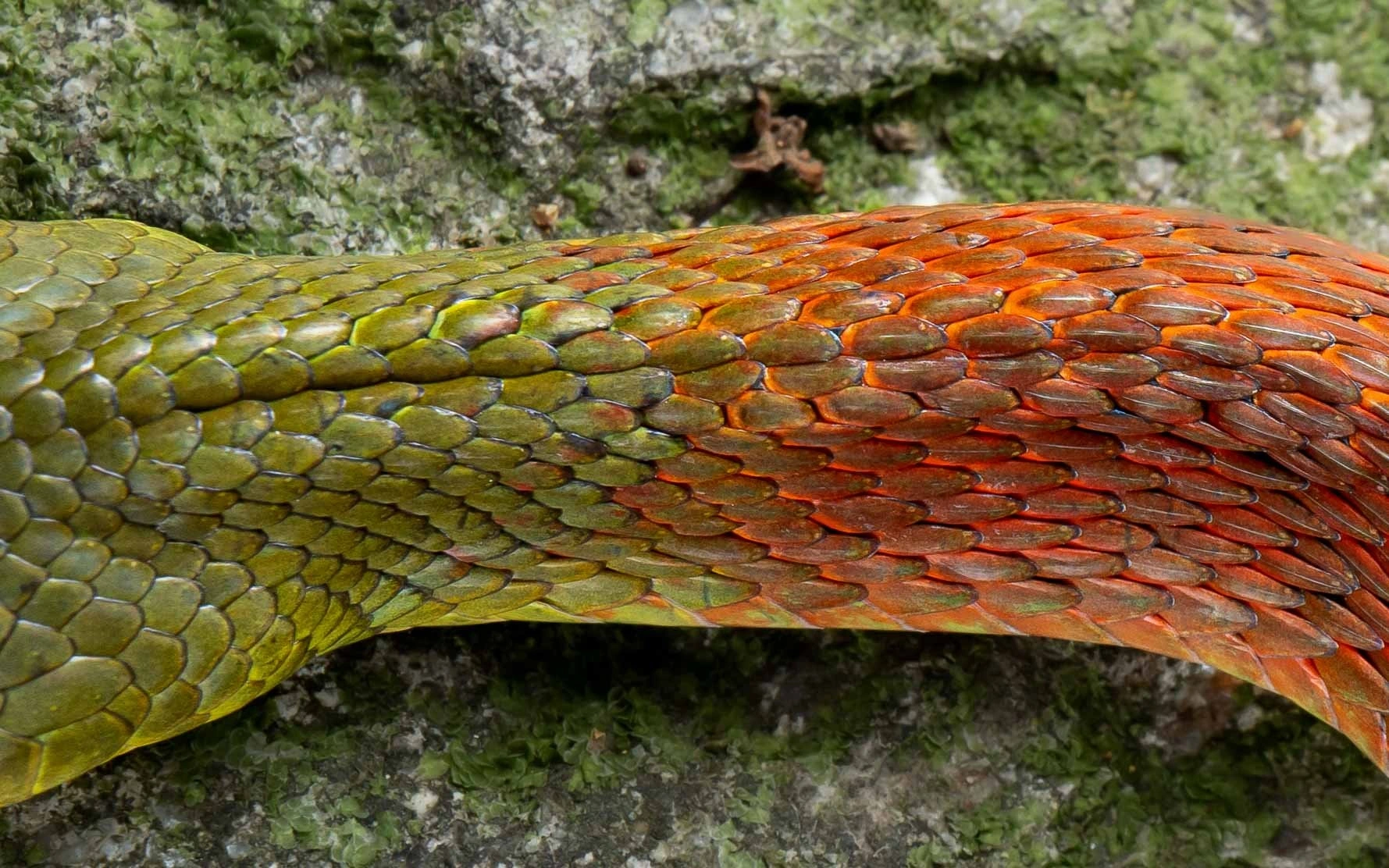
The red scales on the neck of this snake are capable of secreting poison, which can be dangerous to humans if swallowed or comes into contact with the eyes (Photo: HKSnakeID).
Because of the deep-seated fangs, the red-necked cobra usually only delivers a dry bite without injecting venom, which leads many people to mistakenly believe that the red-necked cobra is a harmless and non-venomous snake.
However, if bitten by a red-necked cobra in areas such as between fingers, toes, or on children's hands and feet (small areas that are easily bitten deeply by snakes), the victim can be bitten by the cobra's fangs and become poisoned.
The special thing about red-necked grass snakes is that they not only possess venom glands to inject into enemies through their fangs, but this snake species also possesses a venom gland located in the red neck part of its body.
Close-up of a red-necked grass snake, a venomous snake commonly found in Vietnam (Video: Naturalist).
When threatened or in danger, this snake can secrete venom from its red neck by rupturing poison glands under its skin. The venom is accumulated in the red neck grass from toads, the snake's favorite prey. The venom from this snake's neck can be dangerous if accidentally swallowed or comes into contact with the eyes.
Therefore, if you encounter a red-necked grass snake, you should just chase it away, instead of trying to capture or destroy this snake to avoid the risk of being poisoned by the venom glands on its neck.
Currently, no specific serum has been developed for the venom of the red-necked cobra. The main reason is that the cobra is a docile species, has posterior fangs and rarely injects venom when biting, so research on serum is not really necessary. However, if poisoned by the red-necked cobra, the victim can be fatal.
If bitten by a red-necked cobra, the victim should be taken to the nearest medical facility immediately. Although there is no antivenom available, doctors can treat the patient based on symptoms to help prevent poisoning.
To be continued…
Source: https://dantri.com.vn/khoa-hoc/nhung-loai-ran-doc-co-dac-diem-de-nhan-dang-tai-viet-nam-20250308054935931.htm







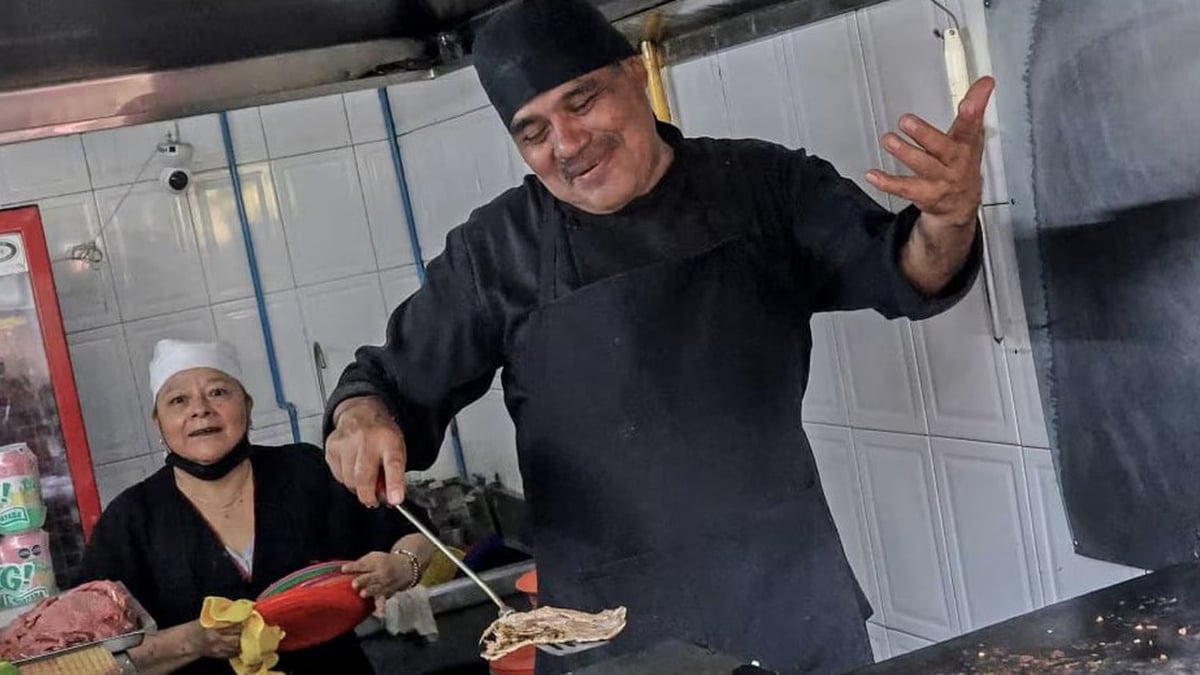




































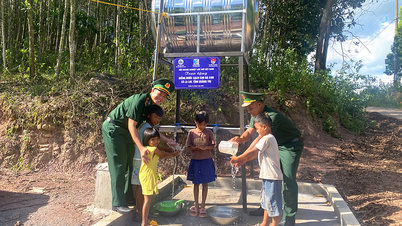






![[Maritime News] More than 80% of global container shipping capacity is in the hands of MSC and major shipping alliances](https://vphoto.vietnam.vn/thumb/402x226/vietnam/resource/IMAGE/2025/7/16/6b4d586c984b4cbf8c5680352b9eaeb0)













































Comment (0)